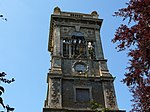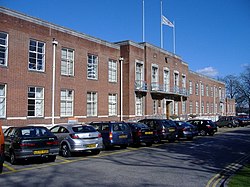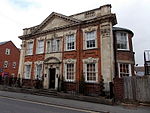Christ Church, Swindon

Christ Church is a grade II* listed church in Cricklade Street, Swindon, Wiltshire, England. It was built in 1851 to a design by George Gilbert Scott. The church is one of two major buildings in Old Town, the other being the old town hall, only a few minutes walk away. Christ church is also a part of a parish, the other church to this parish is St Mary's, a small church near Commonweal School. The interior of the building was remodeled in 2017 to provide better access, a gas heating system and LED lighting. The nave pews were retained and secured with an innovative fixing system allowing them to be removed on occasion to provide more space for large events. The church grounds also house a modern Community Centre which hosts a wide variety of events and activities.
Excerpt from the Wikipedia article Christ Church, Swindon (License: CC BY-SA 3.0, Authors, Images).Christ Church, Swindon
Brock End,
Geographical coordinates (GPS) Address External links Nearby Places Show on map
Geographical coordinates (GPS)
| Latitude | Longitude |
|---|---|
| N 51.55376 ° | E -1.77439 ° |
Address
Christ Church Swindon
Brock End
SN1 3HB , Old Town
England, United Kingdom
Open on Google Maps







